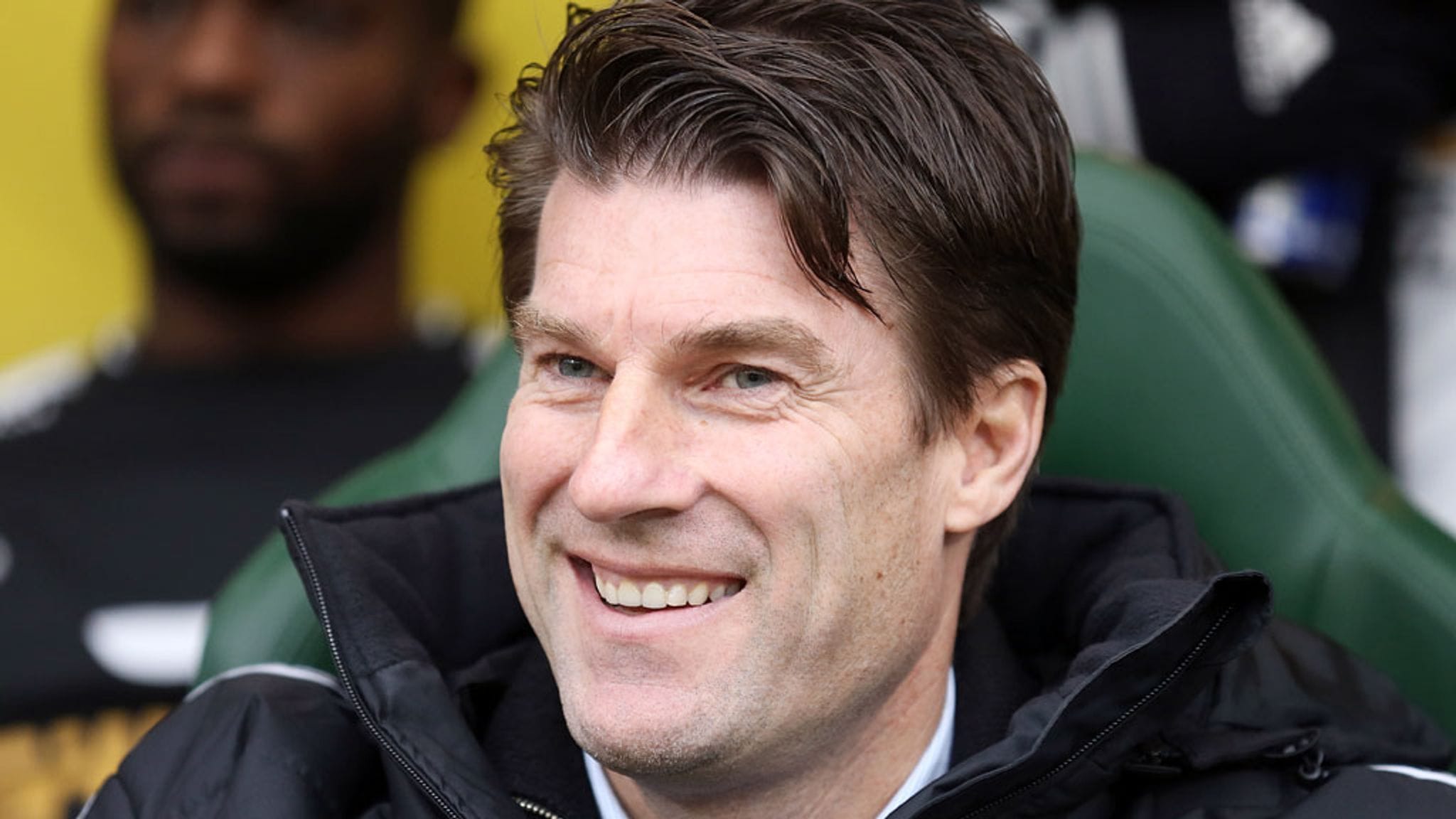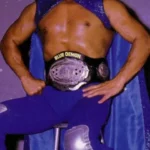Step into the captivating world of Michael Laudrup, the footballing maestro whose artistry on the pitch left an indelible mark. From his time at iconic clubs like Barcelona, Real Madrid, and Juventus to his unwavering determination, Laudrup’s career is a tapestry woven with fascinating threads.
Join us as we unravel the enigmatic departure from Juventus that made headlines, explore the significance of his iconic number, and delve into the reasons behind his absence from the hallowed halls of Euro 92. Along the way, we’ll uncover intriguing questions: Did he claim the coveted Ballon d’Or? Did he ever don the blue of Chelsea? Prepare to be enthralled as we unveil the maestro, Michael Laudrup.
Facts About Michael Laudrup
Michael Laudrup: a name whispered with reverence by football aficionados globally. But what is it about this Danish maestro that earns such lasting admiration? Let’s delve into the captivating career of a true footballing icon.
Born on June 15th, 1964, in the vibrant city of Frederiksberg, Denmark, Laudrup’s journey began like many – a young boy with a ball at his feet and dreams in his heart. It wasn’t long before his talent became undeniable. His professional debut arrived in 1981 with København, a club in his homeland. But Laudrup was destined for bigger stages.
In a groundbreaking move, he signed with the Italian giants Juventus in 1983, etching his name in history as the first Dane to grace Serie A. Laudrup’s prowess wasn’t confined to club football. He became a cornerstone of the Danish national team, earning an impressive 104 caps and netting 37 goals. His impact was profound, most notably during Denmark’s fairytale run to victory in the 1992 European Championship. This triumph cemented his status as a national hero, and he was fittingly crowned Danish Player of the Year a remarkable five times.
The world was his oyster, and Laudrup continued to grace some of Europe’s most prestigious clubs, including the likes of Barcelona, Real Madrid, and Manchester United. His trophy cabinet bulged with accolades, including five league titles and two European Cups, a testament to his winning mentality.
“Genius” is a term often overused in football, but for Laudrup, it seems almost inadequate. His mesmerizing skills, unparalleled vision, and breathtaking dribbling ability left fans and pundits alike spellbound. He didn’t just play the game; he orchestrated it, dictating the tempo and conjuring moments of magic that defied explanation.
But Laudrup’s story doesn’t end with his playing days. Transitioning seamlessly into management, he embarked on a new chapter, proving his tactical acumen was as sharp as his once-deft touches. He guided Swansea City to their first major trophy in 2013, a testament to his ability to extract the best from his players. His managerial journey also took him to Spain, Qatar, and the United Arab Emirates, leaving his mark on each team he led.
Michael Laudrup’s place in football history is unquestionable. He is widely regarded as one of the greatest midfielders to ever grace the game, his name etched in the pantheon of legends. His intelligence, creativity, and influence on modern football are still marveled at today – a true inspiration for aspiring players and seasoned coaches alike.
Laudrup’s legacy extends far beyond trophies and individual accolades. He embodied an elegant, almost poetic approach to the beautiful game, a style that continues to captivate and inspire.
What position did Laudrup play?
While Michael Laudrup was undeniably a force in attack, simply calling him a “forward” wouldn’t do him justice. Think of him more as the maestro, the conductor of the beautiful game – Laudrup was primarily an attacking midfielder.
Picture him in the heart of the action, dictating the pace and flow of the game. This position requires exceptional vision, almost like having eyes in the back of your head, and Laudrup had that in spades. He could pick out a teammate’s run with pinpoint accuracy, sending those killer passes that left defenders in the dust. His technical ability was something to behold – the way he controlled the ball, dribbled through opponents, and created scoring chances seemed almost effortless.
But don’t box him in as just an attacking midfielder. Laudrup was incredibly versatile and could easily slot into other forward positions when needed. This adaptability made him a nightmare for opposing teams, never quite knowing where he’d pop up next.
His impact wasn’t limited to just scoring goals, although he bagged his fair share! Laudrup’s presence in the attacking midfield was often the key ingredient in his team’s recipe for success. He orchestrated attacks with such creativity and precision, unlocking defenses and creating countless opportunities for himself and his teammates.
Think of Laudrup’s time at legendary clubs like Ajax, Barcelona, Real Madrid, and Juventus. It’s no coincidence that these powerhouses achieved incredible success during his tenure. He wasn’t just a player; he was a game-changer.
Interestingly, while his offensive prowess was clear for all to see, Laudrup wasn’t just about flash and flair. He possessed a remarkable sense of composure and an innate ability to read the game, making him a valuable asset even when his team wasn’t in possession. He understood the importance of balance and contributed defensively as well, solidifying his reputation as a complete midfielder.
Keep in mind that football is a dynamic sport. Players, tactics, and even our understanding of the game evolve. While Laudrup’s brilliance as an attacking midfielder is undeniable, further research and analysis might reveal even more nuanced insights into his playing style and contributions to the teams he graced.
Why did Laudrup go to Madrid?
Michael Laudrup’s decision to swap Barcelona’s blue and red for the white of Real Madrid in 1994 left the football world stunned. It was a transfer full of tension and drama, primarily due to the fierce rivalry between these two Spanish giants. But what exactly pushed Laudrup to make such a controversial move?
After four consecutive La Liga titles with Barcelona, Laudrup was probably craving a new challenge. He likely felt he’d done enough to earn the respect of the Barcelona faithful, even if it meant weathering some political storms. Some experts believe Laudrup sensed a shift in the balance of power in Spanish football. Real Madrid, under the guidance of a new manager, was building a team designed for attacking flair, a style that perfectly suited Laudrup’s elegant playmaking abilities. This fresh start, coupled with a system that played to his strengths, may have been too tempting to resist.
Of course, the historical significance of the move can’t be ignored. By joining Real Madrid, Laudrup had the chance to achieve something truly unique: becoming the first player to win five straight La Liga titles with two different clubs. It was a gamble, a risk, but one that ultimately paid off in spectacular fashion.
Laudrup’s transfer to Real Madrid remains a fascinating case study in football history. It reminds us that players, even those at the pinnacle of the sport, are driven by a complex interplay of ambition, circumstance, and opportunity. While some might question his decision, there’s no denying that Laudrup’s time in Madrid cemented his place as a legend of the game.
Did Laudrup Play for Chelsea?
Michael Laudrup had a brief stint with Chelsea back in 1998, arriving at Stamford Bridge on a free transfer after captivating fans worldwide with his incredible skills and football IQ.
You’d think a player of his caliber would be a guaranteed starter, but things didn’t quite pan out that way. Injuries hampered his time in blue, limiting him to just a handful of appearances – seven, to be exact. And he didn’t manage to find the back of the net for Chelsea.
He did, however, play a key part in Chelsea’s UEFA Super Cup triumph in 1998, showing flashes of the brilliance that made him such a legend. Unfortunately, those glimpses were all too fleeting.
His time at Chelsea marked the end of his adventure in the Premier League. He later had a short spell with Copenhagen before hanging up his boots for good after a final stint with Ajax in 2000.
So, while his Chelsea career might not have been a fairytale, Laudrup’s legacy in the world of football remains firmly intact. He’s still remembered as one of the most gifted and entertaining players to ever grace the pitch.
Why did Michael Laudrup miss Euro 92?
Michael Laudrup’s absence from the Danish national team during their legendary Euro 1992 run, despite being a four-time Danish Footballer of the Year, stemmed from a clash of styles and personalities with the team’s coach, Richard Møller Nielsen.
Laudrup thrived on attacking, creative football, always willing to take risks and make dazzling plays. Nielsen, however, preferred a more cautious, defensive approach. This fundamental difference in philosophies led to disagreements, with Laudrup eventually leaving the team in protest. His brother Brian, also a talented footballer, joined him in solidarity.
Even without the Laudrup brothers, Denmark achieved an incredible feat, winning the tournament. Brian Laudrup played a crucial role in their success. But their victory left many wondering what could have been if Michael had been there. It remains one of those “what if” moments in football history.
What Number Did Laudrup Wear?
While many picture Michael Laudrup with the number 11 on his back, which he famously wore during his time with Barcelona and Real Madrid, he also donned the number 10 throughout his career.
When playing for the Danish national team, Juventus, Lazio, and even Real Madrid at one point, Laudrup sported the number 10, a number often associated with playmakers, artists, and midfield geniuses. Laudrup, with his ability to unlock defenses with a single pass and effortlessly dribble through opponents, undeniably fit that description.
This demonstrates Laudrup’s incredible talent and adaptability. Whether wearing 11 or 10, one thing remained constant: Michael Laudrup was a joy to watch.
Did Michael Laudrup Win the Ballon d’Or?
Despite his legendary status and remarkable achievements with clubs like Barcelona and Real Madrid, Michael Laudrup never won the Ballon d’Or, the award given to the best soccer player in the world. This has sparked debate among fans and experts.
Some attribute it to his selfless playing style. Laudrup prioritized team victories over individual glory, often setting up his teammates for success rather than seeking the spotlight himself. In an era where individual brilliance often overshadowed everything else, his selflessness might have been perceived as less flashy.
Others point to the nature of his playing style, which prioritized elegant moves, precise passes, and creating chances over scoring goals. While breathtaking, these plays didn’t always translate to goals, and some argue that this may have led to his brilliance being underestimated by voters.
Despite the absence of a Ballon d’Or, Laudrup’s place in football history is undeniable. He is still considered one of the greatest midfielders ever, and his contributions to legendary teams like Barcelona and Real Madrid are the stuff of legend.
Laudrup’s story extends beyond his playing days. As a manager, he achieved remarkable things, including guiding Swansea City to their first-ever major trophy. This highlights his football genius both on and off the pitch.
The Ballon d’Or may be the missing piece in his trophy cabinet, but Michael Laudrup’s legacy transcends individual awards. He played the beautiful game with heart, grace, and an almost magical touch, forever etching his name in the annals of football history.
If you are a die-hard wrestling fan who is always looking for trivia and facts about your favorite wrestlers, then you should definitely check out this article about facts about andrade el idolo.
If you are a fan of mixed martial arts, then you should check out this article about facts about dan severn.
Check out this intriguing article about facts about mark henry.
- Georgia Platform: A Southern Strategy, 1850s - March 31, 2025
- How many weeks is 40 days: Quick Conversion Guide for Accurate Results - March 31, 2025
- How many feet is 300 meters? 984 Feet: Understand Length Conversions Easily - March 31, 2025

















2 thoughts on “Unveiling the Maestro: Fascinating Facts About Michael Laudrup”
Comments are closed.